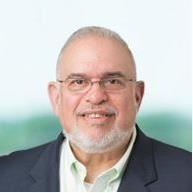17
Jul 2022
Innovating Authentic Proximity Integrally in our Judaism
WHP Alum Joel Goldhammer (Washington)
Exile by COVID has created what Irwin Kula might have referred to as a Messy Reality. Yet, it is precisely this COVID separation that allows us to imagine and create a more expansive version of proximity.
Proximity is the single most essential element of sacred relationships, without which neither we nor our communities, can meet our needs as Jews or realize our communal goals. Without nearness or closeness, we simply share a central story and common beliefs. But proximity confirms our intuition, and our sages’ teachings, that we belong to something larger and greater than ourselves.
To philosopher Martin Buber, God is our unifying context, the meeting place for all meaningful human experiences. He believed we “encounter” God through relationships with other human beings. As Buber put it, “Meet the world with the fullness of your being and you shall meet God.”
Abraham Joshua Heschel believed we encounter God through religious practice, that the performance of mitzvot, with God’s authority behind them, allows us to sense God’s “nearness” and allows each sacred act to create a meeting place for each human being with God.
Both saw the majesty of God in nature, and both described the need for proximity to experience the essence of the divine.
Whether with nature, God, or each other, sustaining deep relationships depends on sufficient closeness for success. To nurture our relationships with one another and with God, proximity is a necessary precondition.
In our master narrative, Jews emerge from one individual named Abram at the time, and his immediate offspring and their families. Abraham’s descendants, with their extended families, migrated to Egypt where they became slaves for 430 years until they followed Moses out of Egypt under God’s protection and direction. They left as escaped Jewish slaves who followed but did not know God.
At Sinai, it was our proximity to God that transformed us from a collection of Jewish slaves into the Children of Israel. We experienced God’s presence, together, as a people, at Sinai. We shared a collective physical experience with God. We saw God’s actions, heard God’s commands, and were awed by God’s power as the very Earth beneath our feet trembled. We experienced the power of proximity to God in that moment.
That “in-person” proximity continued for our entire 40 years in the desert. Our proximity to God reinforced our knowledge of God, our belief in God, and the power of God’s commands to guide our lives.
After Moses died, we entered Canaan as family tribes, settled on allotted land, and realized God’s covenantal commitment to settle the children of Israel in Canaan. And ever since, it has been up to us, as individuals and families, to maintain our personal relationships with God, without the physical access of Sinai.
We created the great Temple in Jerusalem, as commanded, and met there four times a year. This continued until the Babylonian exile, which resulted in the Diaspora that changed Jewish life forever.
Our Jewish response to the Diaspora was to invent portable religion. We remained Jews, without our Jerusalem Temple, by gathering in groups and performing our daily and weekly prayer rituals, and annually re-reading our central story from our Torahs. Whether individually or collectively, we sustained our connection to God by creating proximity to God in our own spaces and communities. By praying together, as communities, we sustained and even strengthened our Judaism.
By gathering in our synagogues, we confirm that we are part of something greater than ourselves. Being together we sustain our nearness in space, time, and relationships both to one another and to God. Synagogues provide our platform and convening spaces to learn and teach our central story to each next generation. We practice our rituals and celebrate our holidays as a cohesive group, together. Especially by gathering in synagogues, we can best practice what Dr. Ron Wolfson has called, “Relational Judaism” and take care of one another.
The proximity we sense in synagogues affords us experience Buber and Heschel invite us to realize, encounters with God through the fullness of our encounters with one another.
In 2020 we experienced yet another diaspora when we could no longer convene safely due to the plague of COVID.
In response, we created virtual Judaism by repurposing business and social media technologies to become our electronic bridges to proximity.
Many of us now perform our individual outreach to God from home, by ourselves. That insular Judaism, with its lack of proximity, causes a tremendous sense of loss and isolation from our synagogue communities and our friends. Despite technology permitting us to see and hear one another, and to pray at the same time, together, virtual Judaism has merely been a two-dimensional (2D) Jewish experience.
We are taught that Judaism rests on three pillars: God (Torah), Learning, and Community (including family). While we can learn our history, practice our rituals, and pray alone, we cannot presently experience the fullness community offers, because we lack proximity. Proximate gatherings are actually mandated. We need a minyan of ten people to pray together. We study in chavruta. Being together is so fundamental to our Judaism, we erect an Eruv to facilitate gathering from distance.
Without proximity, we lose the sensory and emotional reinforcement to know we are not alone. We lose the certain knowledge that we continue to be part of something much greater than ourselves. We lose the informal contacts and conversations that make up the fabric of our Kehilla and sacred space. We have lost our sense of nearness, closeness, and accessibility to God and each other, which are each foundational attributes of proximity.
Proximity engages our muscle memory to blend the common and familiar rhythms of our synagogue community with our rituals. Closeness and access facilitate our ability to nurture our interpersonal relationships and our relationship with God.
We know this happens because after gathering at synagogues, or other Jewish communal gatherings, we feel elevated and nourished by our interactions with our communities. This sharing of experiences and learning nurtures and shapes the contours of our communal identity and enhances the individual satisfaction we each derive through communal engagement.
Proximity allows us to share our stories and it enriches our lives and creates the lore of our communities. Together we can lighten someone else’s burden by offering support or help. When we seize these unexpected opportunities to give or receive help, we savor the personal rewards they offer us.
COVID has forced each of us to experience for ourselves what many among us experience every day, the separation imposed by circumstance. Distance, infirmity, illness, and safety each force a lack of inclusion for some of us every day.
With imagination, we can use this unsought opportunity to proactively engage and expand proximity to our entire community. We can forge a solution to finally create access for those who cannot otherwise feel the communal embrace proximity affords the rest of us.
To recapture and extend our togetherness, we must deconstruct proximity’s components and create synthetic substitutes through intelligent policies, behaviors, and technology.
As a community, we must persistently press ourselves to gather, in safe ways, at every opportunity. In that way, we do not artificially isolate ourselves and lose the proximity some groups of us can experience. We can make this decision comfortably by manufacturing access to as many aspects of proximity as possible. This can mitigate isolation for those who must, or choose, to participate in prayer or community remotely.
Although it may at first sound like an oxymoron, innovating authentic access, even by synthetic means, will enable us to overcome our instinctive discomfort and push back against pockets of resistance at gathering “too soon,” which can divide our communities today.
And, once implemented, we can use this new proximity to solve problems we have lived with, perhaps too comfortably, for years. Those who can no longer drive to our campus can still attend most activities. So too can those with temporary illnesses. And we can invite those family members to join simchas from a great distance in real-time rather than by photograph or video later.
With forethought, we can augment our video capabilities to share access in both directions. Adding a video screen to a sanctuary or gathering room or classroom wall can give physical attendees a greater sense of community too, by letting them see the remote attendees and sense the full scale of community.
We can access learning, in real-time, from distant teachers, together with in-person discussions to follow. We can educate our children, regardless of the weather or the level of health challenges, in their normal patterns.
Taking the separation COVID imposes seriously, and working aggressively to defeat the sense of isolation it has created, can propel our Judaism forward. This shared experience of isolation has opened our eyes to unmet needs and unimagined opportunities. Implementing missing aspects of closeness, which COVID has stolen, can be our impetus to expand authentic proximity in ways we never knew we needed.
Taking the next step can begin immediately by launching efforts to define what losing proximity has cost us. We can identify the elements of satisfaction and comfort we miss most and then segregate those attributes into separate groups organized around which attributes we can recover through policy, through technology, and/or through adjusting behavior. Once we do that, we can begin the implementation of an enhanced proximity model to enable our continuous access to God and one another and create the opportunity to curate a truly meaningful Jewish journey, as we close the distance to each other, one way or another.

Photo by Harli Marten on Unsplash
Get To Know The Author
WHP Alum Joel Goldhammer (Washington) is a C-Suite management consultant for the public and private sectors.

